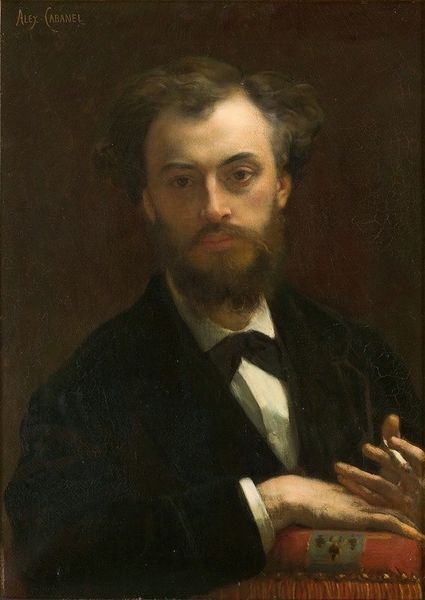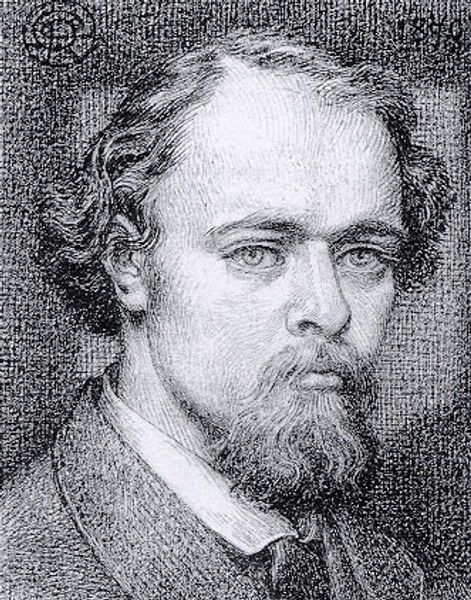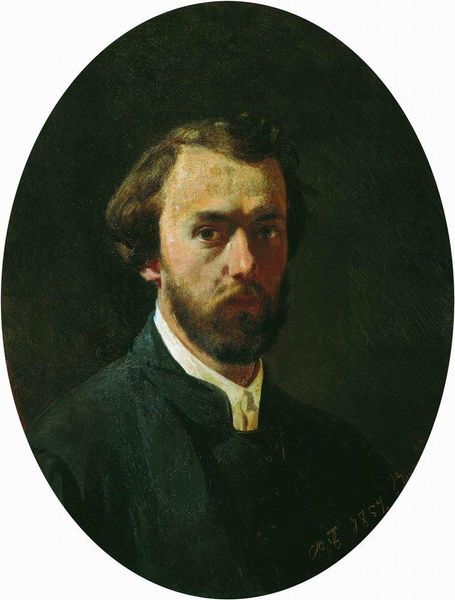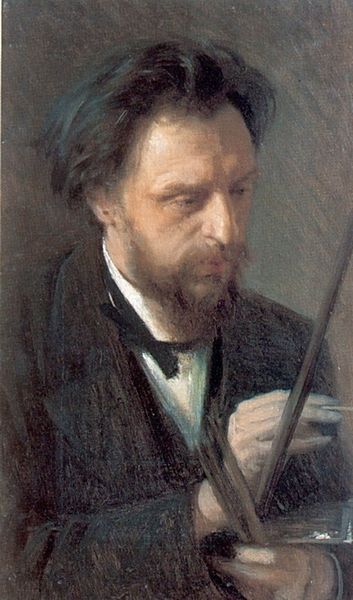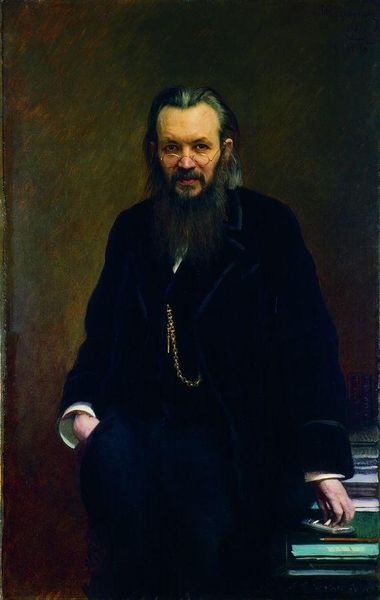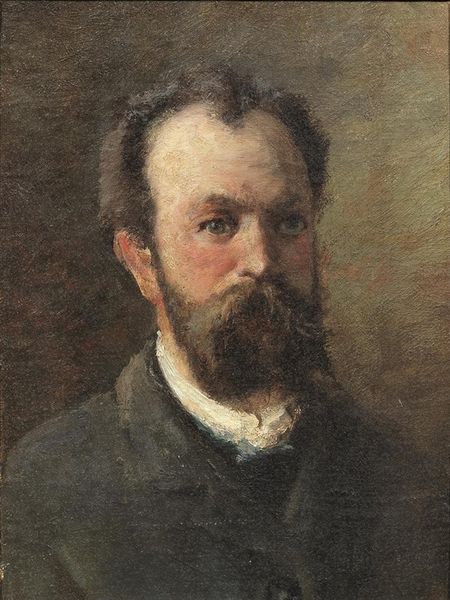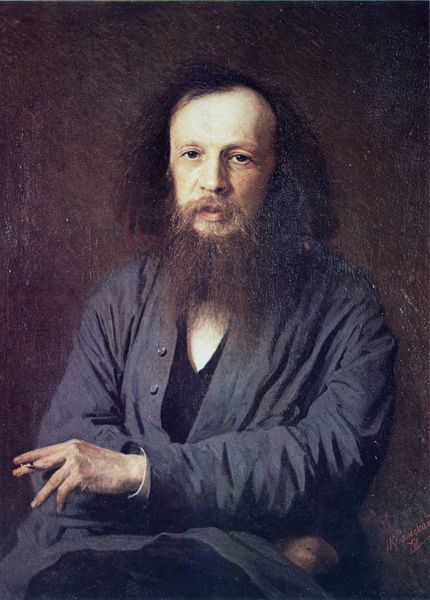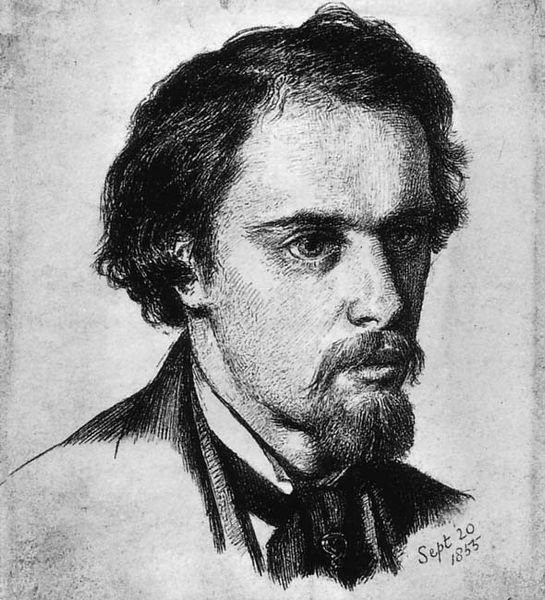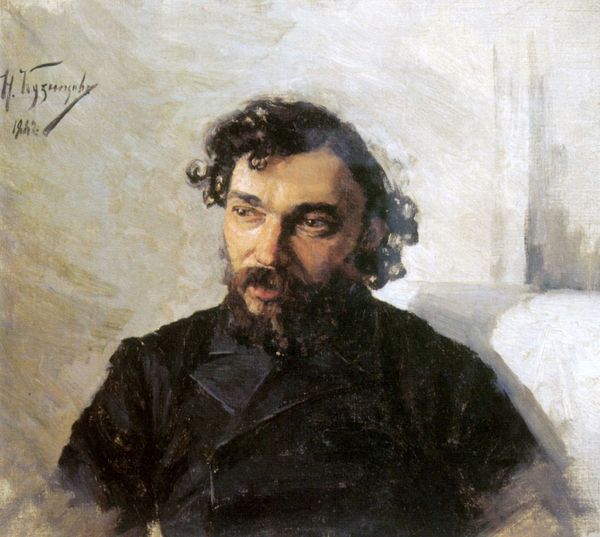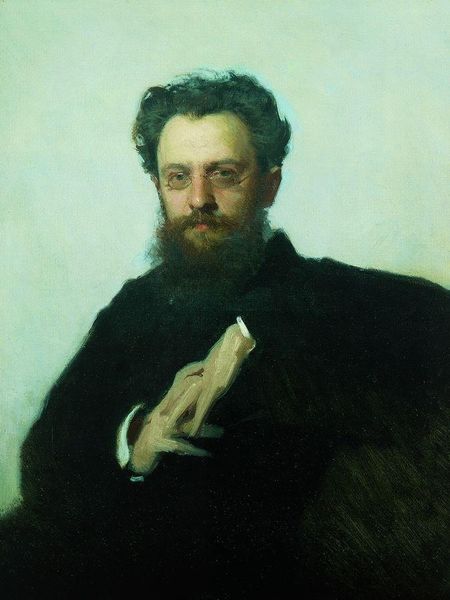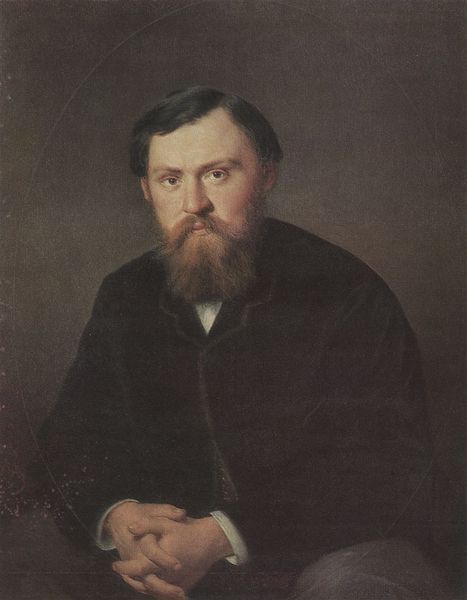
Portrait of Vincenzo Cabianca 1868
0:00
0:00
giovanniboldini
Museo civico Giovanni Fattori, Livorno, Italy
Dimensions: 22 x 19 cm
Copyright: Public domain
Editor: Here we have Giovanni Boldini’s 1868 oil on canvas, "Portrait of Vincenzo Cabianca." The sitter's gaze feels quite intense, almost confrontational. What strikes you when you look at this portrait? Curator: Beyond the surface representation, I'm drawn to the dynamics of artistic circles and power structures at play. How might this portrait reflect Cabianca's status within the Italian art scene? Were these artists challenging or reinforcing established norms? What was Boldini’s perspective, given his relative youth? Editor: That’s fascinating, I hadn’t considered the dynamics between the artists themselves. Do you see anything in the painting's style that tells you about those relationships? Curator: Absolutely. Consider the loose brushwork, for instance. Was Boldini, through his painterly choices, consciously aligning himself with certain avant-garde sensibilities, potentially distancing himself from more academic traditions represented by the older generation? What are your thoughts on the way the gender is performed by both painter and subject? Editor: Interesting point about gender performance. I see a contrast between Cabianca's almost vulnerable expression and the traditionally masculine attire, softened by the vivid colours of the scarf, creating complexity that subverts straightforward masculinity. Curator: Precisely! And situating this in the socio-political ferment of post-unification Italy, what commentary might Boldini be making, intentionally or otherwise, about emerging national identity and shifting ideals of masculinity? Editor: I hadn't thought about it like that at all. I am starting to understand that analysing the power structures embedded in the art world and in broader Italian society during the creation of this painting can enrich my comprehension of the piece. Thank you for opening my eyes to a completely different perspective. Curator: My pleasure. Remember, art always exists within networks of power. Considering these forces can help to unveil even deeper layers of meaning in artworks we thought we already knew.
Comments
No comments
Be the first to comment and join the conversation on the ultimate creative platform.
